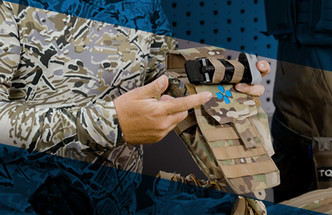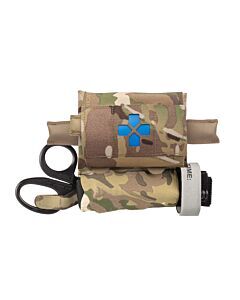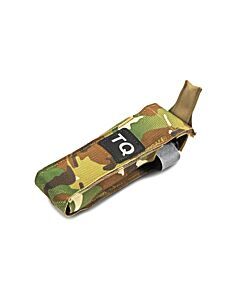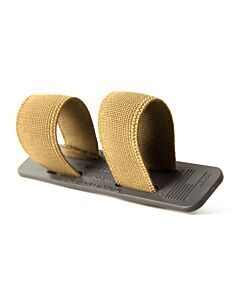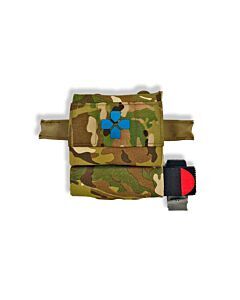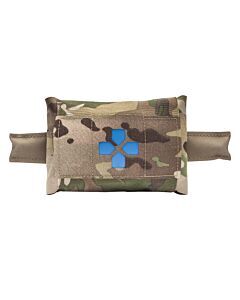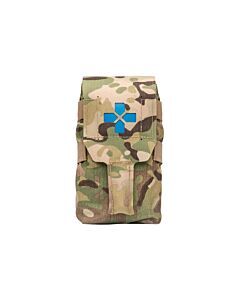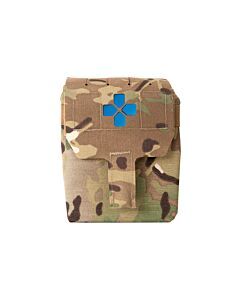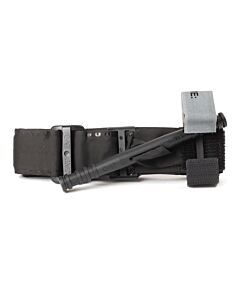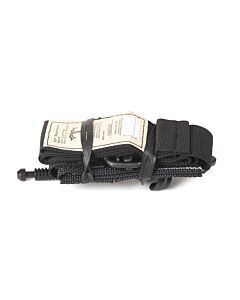Sep 2nd 2024
Ways to Carry Tourniquets for Military, Law Enforcement, and EDC
This week’s video blog article was brought to you by industry friend, Chuck Pressburg
Always Better® | Sept 3rd, 2024
Last week Chuck Pressburg from Presscheck Training and Consulting gave us all a real-world talk about dump pouches including why their design matters and how you should carry them. Check that article and video out here if you missed it. Today he’s discussing tourniquets and various ways to carry them in the video below.
Gone are the days (we hope) when there were debates on whether you should carry a tourniquet. As gun-owners and prepared citizens, it’s just a good idea. Whether you prefer the C-A-T, SOFT T, or another variation of the tourniquet, they are crucial pieces of life-saving equipment when applied properly.
So, what is the best way to carry a tourniquet? The answer is… it depends on your mission and your gear. One effective method is utilizing existing gear pouches. Chuck recommends the versatile Blue Force Gear Ten-Speed pouches, which are sized for M4 mags and can easily accommodate a tourniquet (and other like-sized items).
For those carrying full medical kits, some of the Trauma Kit NOW! med pouches offer dedicated elastic loops for securing tourniquets alongside other first aid supplies. Chuck shows a tourniquet mounted on the side of the Trauma Kit NOW! – Small using the double elastic loops. These loops are on either side of the pouch for an ambidextrous setup or for carrying two tourniquets. Some people like to carry two kinds of tourniquets for use on different extremities.
For a minimalist approach, Chuck showcases his personal range belt setup. It features a Micro Trauma Kit NOW! with Blue Force Gear's Tourniquet Hammock, a simple attachment that allows the tourniquet to hang below the belt for easy access. A variant of this system, called the Shear Hammock, also includes space for EMT scissors.
The next pouch that Chuck mentions is the Tourniquet NOW! Strap which is a clean and elegant design that mounts directly to MOLLE platforms. It is a rigid, molded base with two heavy duty elastic retention loops to snuggly secure a tourniquet almost anywhere. There are slots on top of the Trauma Kit NOW! – Medium to accommodate the Tourniquet NOW! Strap or the Tourniquet NOW! Pouch.
The Tourniquet NOW! Pouch is another excellent way for carrying a tourniquet for rapid deployment. This pouch was designed for those who have requirements to keep their tourniquet covered. The pouch protects against environmental hazards like UV light, dirt, abrasion, and other degrading materials. It’s also marked “TQ” to help others identify it as a tourniquet, as part of some department requirements.
Chuck notes that while exposed carry methods may require more frequent tourniquet replacement due to wear and tear, they offer the advantage of immediate access. Enclosed designs, on the other hand, can extend the service life of the tourniquet – an important consideration for those responsible for their own equipment costs.
Watch the video to see Chuck demonstrate the features and various uses of Blue Force Gear’s pouch designs to select which carry method may be right for you.
Video of Tourniquet Holder Options
Tourniquet Holders Highlighted in Video
|
$17.95 |
$34.95 |
|
Tourniquet NOW! Strap Tourniquet Holder $12.95 |
$14.95 |
Trauma Kits Mentioned
|
Micro Trauma Kit NOW! - Complete Kits $96.95 |
$106.95 |
|
$106.95 |
Tourniquets Mentioned
|
Combat Application Tourniquet (C-A-T) $34.95 |
Special Operations Tactical Tourniquet Wide (SOFT T) $36.95 |
About Chuck Pressberg
SGM(R) Pressburg retired from the US Army on January 1, 2017 after 26 years of active service, mostly in Special Operations and Special Missions Units. After Infantry and Airborne Training in 1990, Chuck completed the Ranger Indoctrination Program and was assigned to the 1st Bn, 75th Ranger Regiment. His experience includes Rifle and Sniper Squad Leader, Asymmetric Warfare Group, and Operation Iraqi Freedom conducting Small Kill Team (SKT) operations and Direct Action raids in support of conventional and Special Operations Forces. Chuck now offers tactical and mindset instruction through his company, Presscheck Training and Consulting, LLC.
About Blue Force Gear®
BFG, headquartered in Pooler, Georgia, has been a trusted name in professional-grade gear and accessories for two decades. Their commitment to excellence, innovative designs, and use of premium materials have made them a favorite among military, law enforcement, and recreational shooters worldwide.
Press Contact
PR Contact: Marketing@blueforcegear.com
Sales and Dealer Contact: Sales@blueforcegear.com

